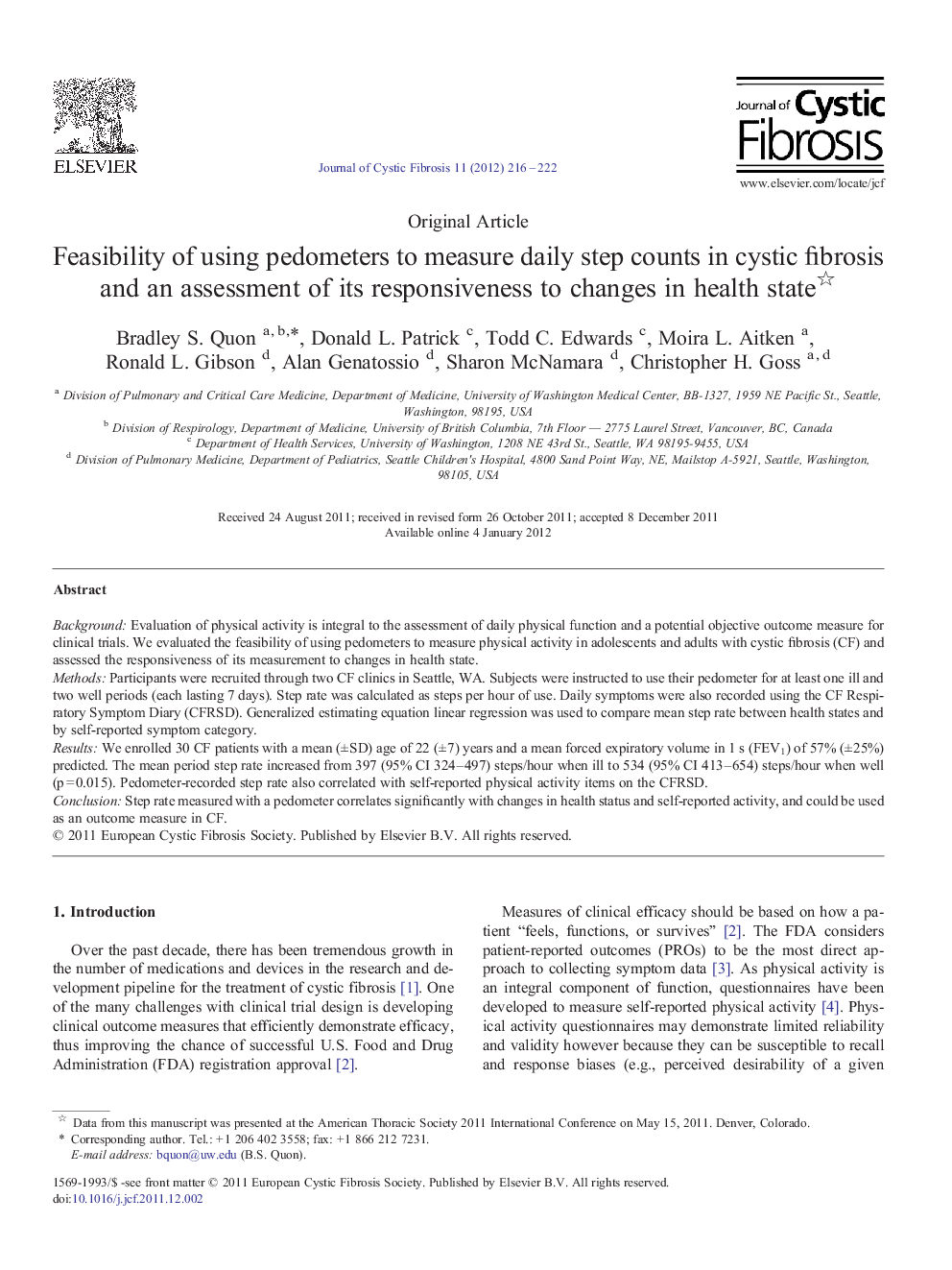| Article ID | Journal | Published Year | Pages | File Type |
|---|---|---|---|---|
| 4208523 | Journal of Cystic Fibrosis | 2012 | 7 Pages |
BackgroundEvaluation of physical activity is integral to the assessment of daily physical function and a potential objective outcome measure for clinical trials. We evaluated the feasibility of using pedometers to measure physical activity in adolescents and adults with cystic fibrosis (CF) and assessed the responsiveness of its measurement to changes in health state.MethodsParticipants were recruited through two CF clinics in Seattle, WA. Subjects were instructed to use their pedometer for at least one ill and two well periods (each lasting 7 days). Step rate was calculated as steps per hour of use. Daily symptoms were also recorded using the CF Respiratory Symptom Diary (CFRSD). Generalized estimating equation linear regression was used to compare mean step rate between health states and by self-reported symptom category.ResultsWe enrolled 30 CF patients with a mean (± SD) age of 22 (± 7) years and a mean forced expiratory volume in 1 s (FEV1) of 57% (± 25%) predicted. The mean period step rate increased from 397 (95% CI 324–497) steps/hour when ill to 534 (95% CI 413–654) steps/hour when well (p = 0.015). Pedometer-recorded step rate also correlated with self-reported physical activity items on the CFRSD.ConclusionStep rate measured with a pedometer correlates significantly with changes in health status and self-reported activity, and could be used as an outcome measure in CF.
